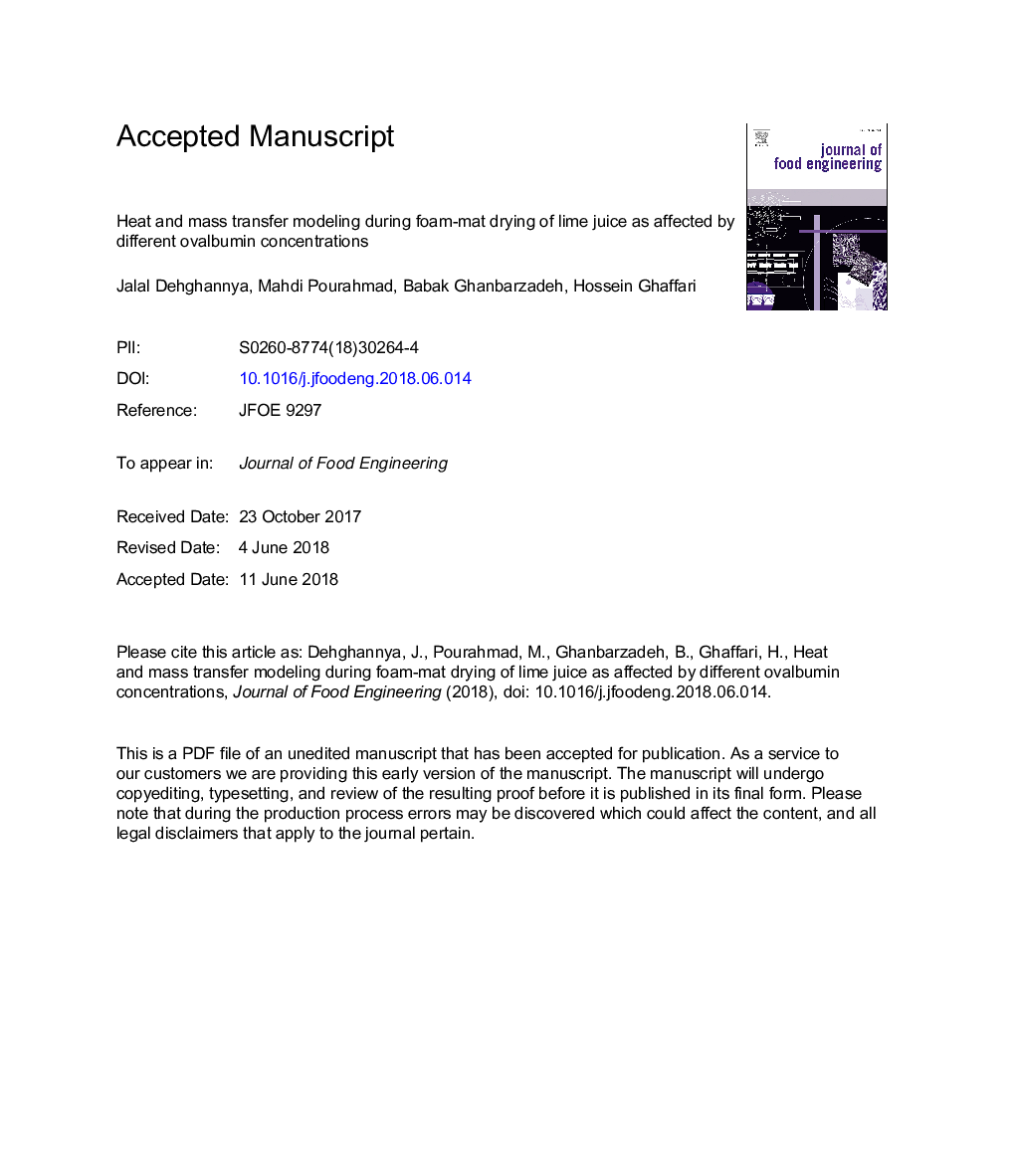| Article ID | Journal | Published Year | Pages | File Type |
|---|---|---|---|---|
| 6664416 | Journal of Food Engineering | 2018 | 38 Pages |
Abstract
This study evaluated the effect of ovalbumin concentration as a foaming agent (2, 3 and 4%) on foam-mat drying of lime juice at 60â¯Â°C with foams of 5â¯mm in thickness. The process was also simulated to investigate the effect of ovalbumin concentration on temperature and moisture distributions. The model was validated by matching the data obtained from the model with experimental data. An increase in ovalbumin concentration led to a decrease in the powder's bulk and tapped density and an in increase in its water absorption index by 11.22%. Changes in bulk and tapped densities were in the 0.336-0.4 and 0.511-0.598â¯g/cm3 range, respectively. Changes in color parameters of the hue angle also had statistically significant differences in ovalbumin concentrations of 2 and 4%, while there was no significant difference in concentrations of 2-3% and 3-4%. The results showed a good correlation coefficient of over 0.90 between the experimental data and data obtained from the model. The uniform temperature and moisture distributions during foam-mat drying improved the qualitative characteristics of the final product in terms of the uniformity of the resulting powder's moisture content ultimately leading to a higher quality lime juice powder.
Related Topics
Physical Sciences and Engineering
Chemical Engineering
Chemical Engineering (General)
Authors
Jalal Dehghannya, Mahdi Pourahmad, Babak Ghanbarzadeh, Hossein Ghaffari,
